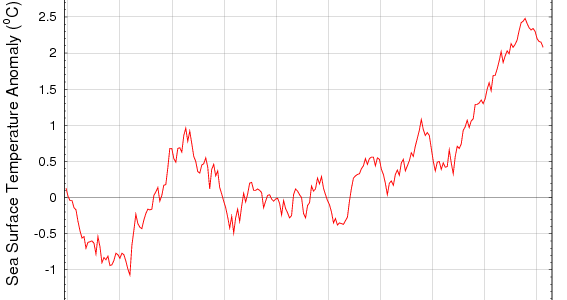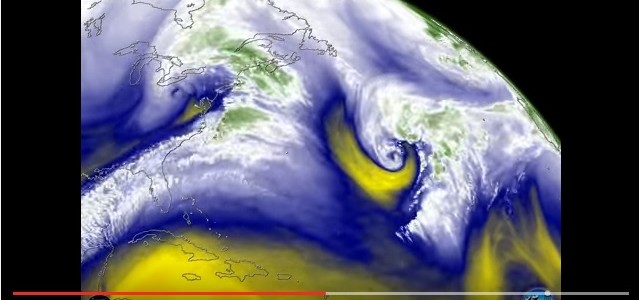El Nino and La Nina
-

A few months ago I shared a photo of pink flowers filling the Atacama Desert in Chile, a rare event caused by unusual rains in the region most likely linked to El Niño. Today you might enjoy a video of the wildflowers that are blooming in Death Valley due to the El Niño rains that…
-

El Niño has been strongly affecting the climate of the Southeast for the past few months, leading to our current wet conditions. While temperatures in December were much warmer than expected for an El Niño winter, since then the Southeast has cooled down to more normal values. Cloudiness this year has also been an issue…
-

A lot of good weather-related videos have shown up in my Facebook feed this week. You might enjoy them too. Marshall Shepherd of UGA pointed out a humorous short video called “Blame it on El Niño–Do you know what it really is?” here. The New York Times posted a descriptive video about how hurricanes form here.…
-

While a strong El Niño continues in the eastern Pacific Ocean, farmers are looking ahead to the next growing season, which may feel the impacts of the opposite atmospheric oscillation, La Niña. AgWeb posted an article yesterday talking about the impact of a La Niña on crop prices next year, particularly the impact on…
-

From the Louisiana State Climate Office: This interesting graphic from the Storm Prediction Center shows how El Niño and La Niña may influence local severe weather. The top map shows the average number of January watch days during the 10 strongest Dec-Jan El Niños as rated by the MEI, or Multivariate ENSO Index. The middle…
-

ABC News posted a story today about the severe drought in South Africa. In the last week 11 people have died from heatstroke associated with record-setting high temperatures in the dry conditions. One farmer reported that he has already lost $60,000 this season because he has not been able to plant a single seed. He…
-

If you are looking for ways to explain El Niño to producers or your parents or children, you might be interested in two recent resources on El Niño that I found online. The World Meteorological Organization has a simple 3-minute video tutorial which explains what El Niño is and how it affects global climate at https://www.youtube.com/watch?v=v92Iqihct98.…